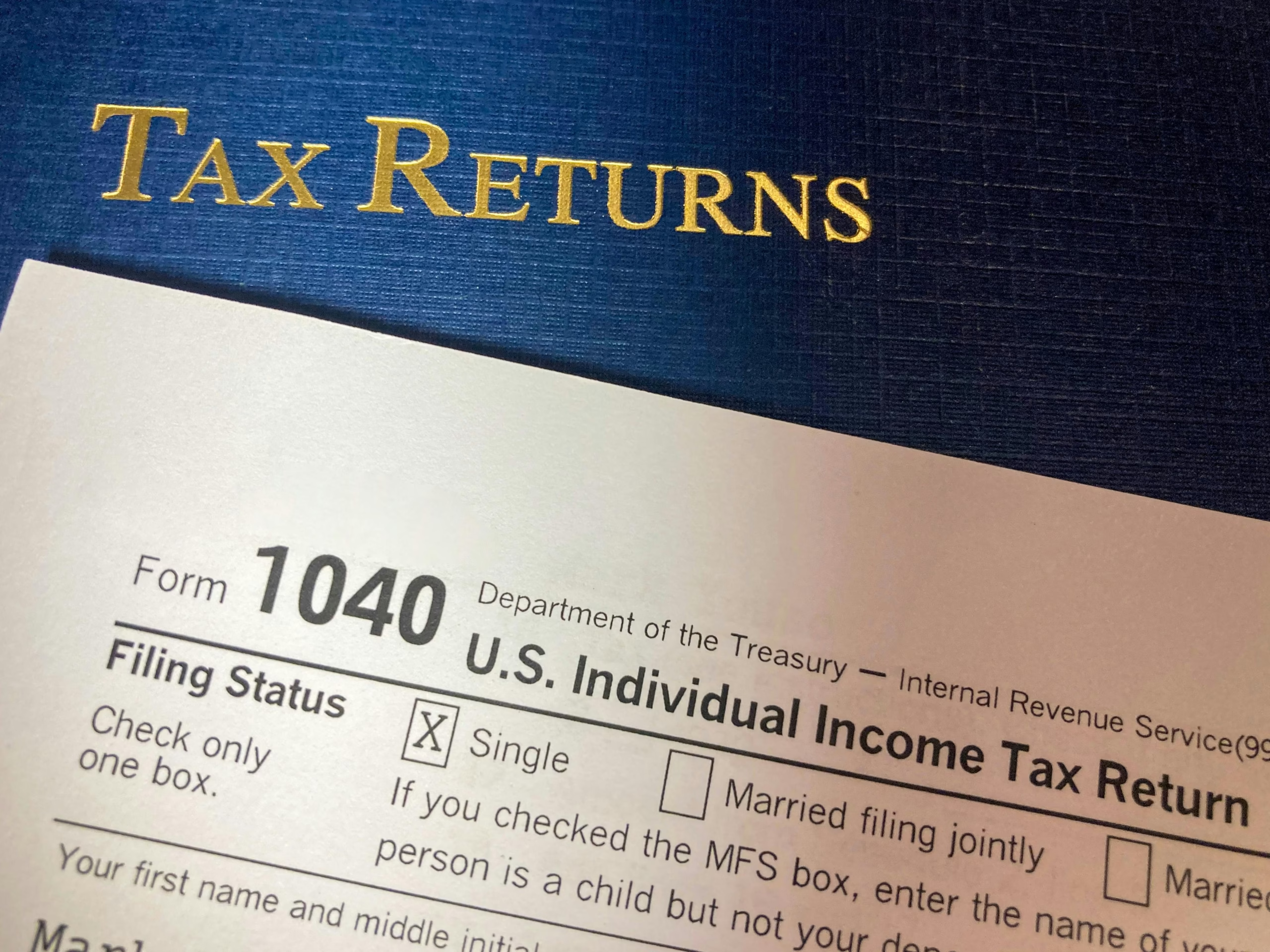Welcome to another installment of our Taxes 101 series! Today we’re diving into one of the most fundamental—yet surprisingly confusing—aspects of filing your taxes: your filing status. If you’ve ever stared at that section of your tax return wondering whether you’re making the right choice, you’re definitely not alone.
Here’s the thing about filing status: it’s not just a box you check. This single decision ripples through your entire tax return, affecting everything from how much you owe to which credits you can claim. Get it right, and you could save money on your tax bill. Get it wrong, and you might be paying more than necessary or even facing penalties down the road.
The good news? Once you understand how filing status actually works, the decision becomes much clearer. Let’s walk through everything you need to know to make the right choice for your situation.
Why Your Filing Status Matters More Than You Think
Think of your filing status as the foundation of your entire tax return. It sets the stage for everything else that follows. Your filing status determines your tax brackets (meaning how much tax you pay on each dollar of income), your standard deduction amount, and whether you’re even eligible for certain credits and deductions.
Here’s what makes this particularly important: your filing status is locked in based on your situation on December 31st. That’s right—if you got married on New Year’s Eve, the IRS considers you married for the entire year. If you got divorced on December 31st, you’re considered unmarried for the whole year. It’s one of those quirky tax rules that can have big implications.
The Five Filing Status Options Explained
Let’s break down each filing status in plain English, because the IRS instructions can sometimes feel like they’re written in code.
Single: The Straightforward Option
If you’re not married on December 31st and don’t qualify for any of the other special statuses, you’ll file as Single. It’s pretty straightforward—no dependents required, no complicated rules to navigate. For 2025, single filers get a $15,750 standard deduction.
The thing about filing Single is that while it’s simple, it’s not always the most tax-friendly status. Single taxpayers generally pay higher rates than married couples with similar income levels. But if this is your situation, don’t worry about it—focus on maximizing the deductions and credits that are available to you.
Married Filing Jointly: Usually the Winner
If you’re married, filing jointly is typically your best bet. You get the highest standard deduction ($31,500 for 2025), the most favorable tax brackets, and access to credits that separate filers can’t claim. The math usually works out better when you combine your incomes and file one return together. Of course, both spouses need to agree to file jointly, which you document by both signing the tax return.
But here’s something important to understand: when you file jointly, you’re both responsible for the entire tax bill. The IRS calls this “joint and several liability,” which basically means if your spouse made an error or didn’t report some income, you could both be on the hook for the additional taxes, interest, and penalties. For most couples, this isn’t a concern, but it’s worth understanding.
Married Filing Separately: When Going Solo Makes Sense
Sometimes married couples are better off filing separate returns, even though it’s less common. You’ll each get a $15,750 standard deduction (the same as Single), and you’ll generally pay higher tax rates than if you filed jointly.
So when might this make sense? There are a few scenarios where the math works out better. Maybe one spouse has significant medical expenses that are easier to deduct with a lower individual income. Perhaps one person has large miscellaneous deductions that phase out at higher income levels. Sometimes people choose to file separately simply because they want to keep their tax affairs separate—maybe they’re going through a divorce, or there are concerns about one spouse’s tax compliance.
Just remember: if you’re married and one of you decides to file separately, you both have to file separately. It’s all or nothing.
There are some trade-offs with separate filing that are worth knowing about. You can’t claim education credits, you can’t deduct student loan interest, and you can’t claim the Earned Income Tax Credit. Also, if one spouse itemizes deductions, the other has to itemize too—neither can take the standard deduction.
Head of Household: The Best Deal for Single Parents (If You Qualify)
Head of Household is often the most beneficial filing status for single parents, offering a $23,625 standard deduction for 2025 and more favorable tax brackets than Single.
To qualify for Head of Household, you need to check three boxes: you’re unmarried (or considered unmarried) on December 31st, you paid more than half the cost of keeping up a home for the year, and a qualifying person lived with you for more than half the year.
That “more than half the cost” requirement trips people up sometimes. We’re talking about things like rent or mortgage payments, property taxes, utilities, groceries consumed at home, and home repairs. Child support you receive doesn’t count toward what you paid—it actually works against you in this calculation.
The qualifying person is usually your child, but it could also be a parent you’re supporting (though they don’t have to live with you), or another relative who’s your dependent and lived with you most of the year.
Here’s a misconception I hear a lot: “I’m single and I have a kid, so I file Head of Household.” Not necessarily. You have to meet all the requirements. If someone else paid most of the household expenses, or if your child didn’t live with you for more than half the year, you might not qualify.
Qualifying Surviving Spouse: Help During a Difficult Time
If your spouse passed away in 2023 or 2024, you might qualify for this status when filing your 2025 return. It’s designed to ease the tax burden during an already difficult time by letting you use the same standard deduction and tax rates as Married Filing Jointly for up to two years after your spouse’s death.
To qualify, you need to have a dependent child living with you and you must pay more than half the cost of keeping up your home. In the year your spouse actually died, you’d typically file Married Filing Jointly. Then for the next two years, if you meet the requirements and haven’t remarried, you can use Qualifying Surviving Spouse.
After those two years, you’ll need to file as Single or Head of Household if you still qualify.
Special Situations That Complicate Things
Sometimes life doesn’t fit neatly into these categories, and the tax code has some special rules to address that.
When Married Means Unmarried
There’s actually a situation where you can be legally married but considered unmarried for tax purposes. If you lived apart from your spouse for the last six months of the year, you’re filing a separate return, and you have a dependent child who lived with you for more than half the year, you might qualify as “considered unmarried.”
This can be a big deal because it means you might qualify for Head of Household instead of Married Filing Separately, which is usually much better tax-wise.
Divorced Parents and Custody Situations
Divorce adds another layer of complexity. The parent who has custody for more than half the year generally qualifies for Head of Household, regardless of which parent gets to claim the child as a dependent. These are two separate determinations, and divorce decrees sometimes specify who can claim the dependency exemption without addressing the custody time that determines filing status.
Multiple Support Situations
Sometimes no single person provides more than half of someone’s support—think aging parents with multiple adult children helping out. The tax code allows for multiple support agreements where the supporting parties can agree that one person will claim the dependent, potentially qualifying that person for Head of Household.
How to Actually Choose the Right Status
Here’s how I recommend thinking through this decision:
Start with the basics. Are you married or not on December 31st? If you’re not married, do you have dependents? If you’re married, is there any reason to consider filing separately?
Then dig into the details. If you’re unmarried with dependents, walk through the Head of Household requirements carefully. Did you really pay more than half the household costs? Did your qualifying person live with you for more than half the year?
If you’re married, here’s where it gets interesting. Most of the time, filing jointly will save you money. But if one spouse has significant medical expenses, miscellaneous deductions, or you’re dealing with other special circumstances, it’s worth running the numbers both ways.
This is where tax software really shines—most programs will calculate your tax liability under different filing status scenarios so you can see which works better. Don’t just assume; check the math.
Real Stories from Real Situations
Let me share a few examples that illustrate how this works in practice.
Take Maria, a divorced mom with a 10-year-old son. She pays $1,500 a month for rent and utilities, plus groceries and other household expenses. Her ex-husband pays $600 a month in child support. Maria is definitely paying more than half the household costs, and her son lives with her all year. She clearly qualifies for Head of Household, which gives her a significantly higher standard deduction ($23,625 vs. $15,750 for Single) and more favorable tax brackets.
Then there’s John and Sarah, a married couple with very different financial situations. John makes $120,000 and had $15,000 in medical expenses this year. Sarah makes $80,000 with no significant medical expenses. If they file jointly, their combined income means medical expenses have to exceed $15,000 before they can deduct anything (medical expenses must exceed 7.5% of AGI). John’s expenses exactly hit that threshold.
But if they file separately, John’s medical expenses only need to exceed $9,000 (7.5% of his $120,000 income) before he can start deducting them. That means he can deduct $6,000 in medical expenses. Depending on their tax situation, that extra deduction might make filing separately worthwhile, even with the higher tax rates.
Here’s another scenario: Tom’s wife passed away in March 2024. He has a dependent child and hasn’t remarried. For his 2024 return, he filed Married Filing Jointly. For 2025 and 2026, he can file as Qualifying Surviving Spouse, keeping those beneficial joint filing tax rates and standard deduction. Starting in 2027, he’ll need to file as Single or Head of Household.
When Life Changes, So Does Your Filing Status
Major life events often trigger changes in filing status, and it’s worth planning for these transitions.
Getting married opens up new options but also new decisions. You can file jointly or separately for the entire year, regardless of when during the year you got married. Most couples benefit from joint filing, but it’s worth comparing if one spouse has unusual circumstances.
Divorce affects your filing status based on whether it’s finalized by December 31st. If you’re still legally married on that date, you’ll need to file as married (jointly or separately), even if you’ve been separated all year.
Having children can qualify you for Head of Household if you’re single, and it affects various credit calculations regardless of your filing status.
The death of a spouse creates a series of filing status transitions that span several years, each with different benefits and requirements.
Common Mistakes to Avoid
The biggest mistake I see is people choosing Head of Household without meeting all the requirements. The IRS pays close attention to this one because the tax benefits are significant. In fact, tax preparers are required to ask specific questions and document the answers to confirm that Head of Household is appropriate for your situation—it’s not just a box we can check without verification. If you’re going to claim Head of Household, make sure you can document that you paid more than half the household expenses and that your qualifying person lived with you for more than half the year.
Another common error is married couples assuming that joint filing is always best without running the numbers. While it usually is, there are situations where separate filing saves money.
I also see people missing opportunities—like surviving spouses who don’t realize they can use the beneficial Qualifying Surviving Spouse status for two years, or married people filing separately who don’t realize they might qualify as “considered unmarried” for Head of Household. The good news is that if you discover you used the wrong filing status, you can often correct it by amending your return within three years of the original filing date.
When to Get Help
Filing status can get complicated, especially during times of life changes. Consider getting professional help if you’re unsure which status gives you the best outcome, if you’re going through a divorce and need to coordinate strategies, or if you have complex family situations.
Sometimes the financially optimal choice isn’t the best choice overall. There are relationship dynamics to consider, liability concerns with joint filing, and sometimes just the peace of mind that comes with keeping things separate.
The Bottom Line
Your filing status is more than just a box to check—it’s a strategic decision that affects your entire tax situation. Understanding the options and requirements helps ensure you’re not paying more than necessary while staying compliant with tax rules.
The key is taking the time to understand your options and, when in doubt, running the numbers to see which choice works best for your specific situation. Life changes, and your filing status strategy should evolve with it.
Questions about your filing status? If you’re facing a complex filing status decision or want to make sure you’re maximizing your tax benefits, we’re here to help. At JCT Tax Solutions, we’ll analyze your specific situation and help you choose the filing status that works best for you.
Contact us today to schedule a consultation and take the guesswork out of your tax filing decisions.
This article is part of our Taxes 101 series designed to help individuals and small business owners understand essential tax concepts. The information provided is general in nature and hasn’t been customized for your specific tax situation. For personalized advice regarding your filing status and tax planning needs, please schedule a consultation with our team.



